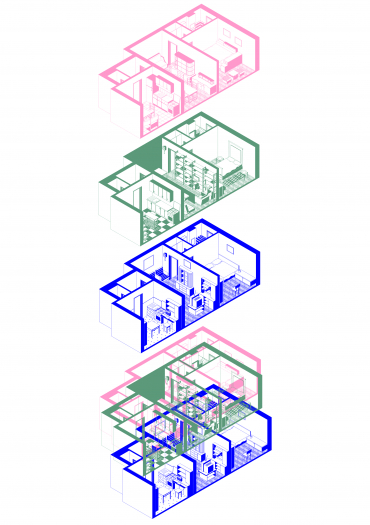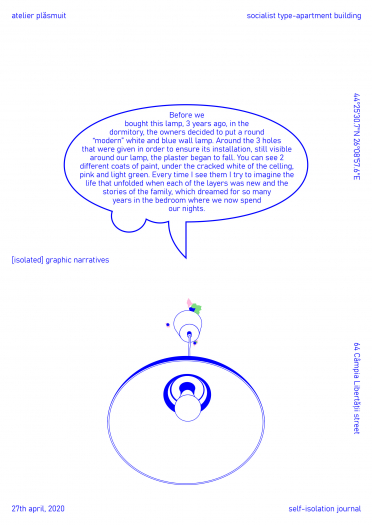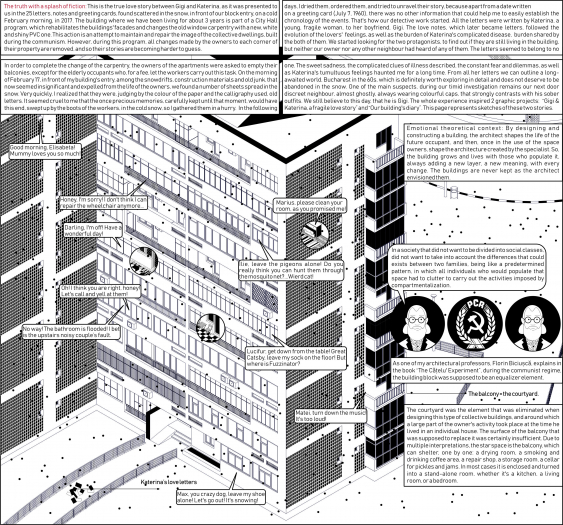With the support of the Fédération Wallonie-Bruxelles.

Comics, purely a spatial medium, represent the point where words, sequences and images meet, possessing a big potential of building powerful stories about people, places and emotions. The flexible hybrid graphic medium of comic strips, which combines, in their structure, the narrative element, space and movement, have always had a strong connection with the notion of the “city”. Functioning as a narrative generator, the urban landscape is an important plot element, even atmospheric, and symbolic protagonist, remaining ideologically associated to the original story of the comic. A rich and varied manner of expression, not only used as an amusing artistic medium dedicated to children and teenagers, comics can be a stimulating manner of rapidly exploring and promoting the political, cultural and aesthetic particularities of the country of its origin.
Architects who chose comics as an alternative manner of expressing have a great respect for the sequential art, have a deep knowledge about the concepts and structure of this art, recognizing the complexity of its creative process. Far from being considered a free gesture, only used to attract another category of public, comics require an intimate research, allowing the architect who creates it, because of its mixed nature, to present analytically and critically the story of the architectural proposal. All these elements lead to a number of different graphical results (in terms of composition, dynamics, color, rhythm in which the story takes place etc.) differing from traditional comics.
With the support of the Fédération Wallonie-Bruxelles.

La bande dessinée, un média purement spatial, représente le point de rencontre entre les mots, les séquences et les images, et possède un grand potentiel pour construire des histoires puissantes sur les personnes, les lieux et les émotions. Le support graphique hybride et flexible qu'est la bande dessinée, qui combine, dans sa structure, l'élément narratif, l'espace et le mouvement, a toujours eu un lien fort avec la notion de "ville". Fonctionnant comme un générateur de récit, le paysage urbain est un élément important de l'intrigue, voire un protagoniste atmosphérique et symbolique, restant idéologiquement associé à l'histoire originale de la bande dessinée. Un mode d'expression riche et varié, qui n'est pas seulement utilisé comme un support artistique amusant destiné aux enfants et aux adolescents, la bande dessinée peut être un moyen stimulant d'explorer et de promouvoir rapidement les particularités politiques, culturelles et esthétiques du pays d'origine.
Les architectes qui ont choisi la bande dessinée comme mode d'expression alternatif ont un grand respect pour l'art séquentiel, ont une connaissance approfondie des concepts et de la structure de cet art, reconnaissant la complexité de son processus créatif. Loin d'être considérée comme un geste gratuit, utilisé uniquement pour attirer une autre catégorie de public, la bande dessinée exige une recherche intime, permettant à l'architecte qui la crée, en raison de sa nature mixte, de présenter de manière analytique et critique l'histoire de la proposition architecturale. Tous ces éléments conduisent à un certain nombre de résultats graphiques (en termes de composition, de dynamique, de couleur, de rythme dans lequel se déroule l'histoire, etc.) différents des bandes dessinées traditionnelles.
With the support of the Fédération Wallonie-Bruxelles.

Binnenkort

Andrei&Gentiana Dumitrascu

Andrei&Gentiana Dumitrascu

Andrei&Gentiana Dumitrascu

Andrei&Gentiana Dumitrascu